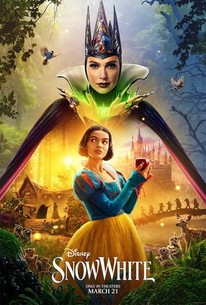Introduction to Disney’s Snow White
Disney’s «Snow White and the Seven Dwarfs» is a timeless classic that has enchanted audiences since its release in 1937. As the first animated film in a long time, it set the standard for all animated films that followed. The story revolves around a beautiful young princess named Snow White, who becomes the target of her evil stepmother, the Queen. With captivating animation, memorable music, and powerful themes of love and friendship, «Snow White» is a film beloved by generations.
The Story
The story begins in a kingdom where the Queen, obsessed with being the most beautiful, asks for her magic mirror. When she tells her that Snow White has outgrown her beauty, the Queen’s jealousy flares up and leads her to plot Snow White’s death. She orders the huntsman to take Snow White into the forest and kill her, but the huntsman, unable to cope, frees Snow White. Alone and frightened, Snow White stumbles upon a strange cottage belonging to the seven dwarfs. The dwarfs – Doctor, Rude, Merry, Sleepy, Cheeky, Sneezy and Stupid – take her in, and she finds comfort and friendship in their company.
However, the Evil Queen discovers that Snow White is still alive and devises a series of sinister plans to eliminate her once and for all. From a poisoned apple to disguising herself as an old woman, the Queen’s determination to reclaim her title as the Fairest leads Snow White into dramatic confrontations and moments of danger. Ultimately, it is true love’s kiss from the prince that awakens her from the enchanted sleep caused by the poisoned apple, leading to a happy ending.
Animation and Artistic
One of the best things about «Snow White and the Seven Dwarfs» is its groundbreaking animation. Disney’s animation team used a variety of techniques to create fluid movements and realistic expressions, paving the way for future animated films. The use of vibrant colors and detailed backgrounds enhances the storytelling and immerses viewers in Snow White’s enchanting world.
| Animation Techniques | Cinematography |
|---|---|
| Cel animation | Layers of transparent celluloid sheets were used to create the illusion of movement. |
| Multi-plane camera | A revolutionary camera technique that added depth to animated scenes. |
| Live-action reference | Animators used live footage to study human movement and expressions. |



 30/30
30/30